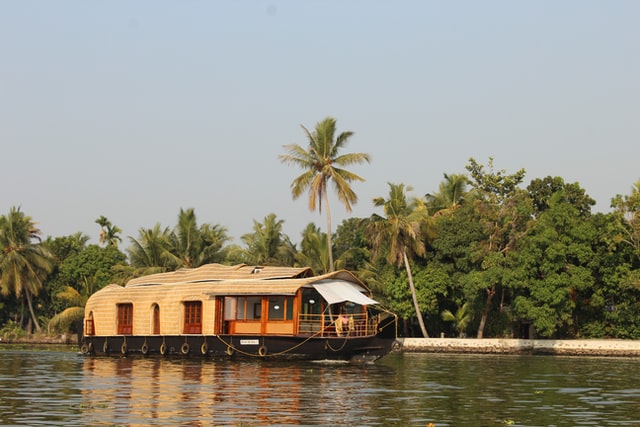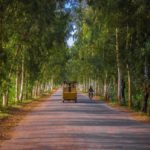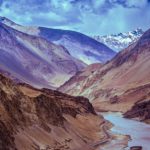Spirits of the Night in Kerala India

Mr. Walton, the venerable owner of the guesthouse in which I was staying in Cochin, was deep in conversation with a young journalist from Bombay as I arrived. Having read that he was a font of information on local lore, I had deliberately chosen his small hotel in Kerala. “Tonight is the Negro spirit candle lighting. It is something you should see,” he told the journalist he was speaking to as she stood to leave, and gave her a printout of a newspaper article describing the ritual. My curiosity was piqued.
Portuguese traders began their iron-fisted rule of Kerala, at the center of the spice trade, in the early 1500s. When the Dutch attacked and took control in 1663, the wealthy colonialists, in an effort to preserve their ill-gotten booty, came up with a sadistic scheme. They built niches in a cement wall, placed the gold in the arms of their African slaves, and then mortared the wall closed, with the slaves still alive inside. The idea was that when the traders returned, the ghosts of their faithful slaves would lead them back to their treasure. So the legend goes.
India is not a quiet country, and at any given moment you could be thrust into an animated, boisterous crowd. The secret is to go with the flow and ask questions later.
Centuries later a mythical figure, Kapiri Muttapan, became the incarnation of these martyred slaves. People of all religions pay homage, and ask for favors or guidance from the spirit. They light candles and leave offerings, usually cigars or toddy, at small shrines in the city on Tuesdays and Fridays.
I searched for a rickshaw driver willing to take me to the place mentioned in the article. At first he looked at me with a puzzled expression as he read the complex directions that Mr. Walton had scribbled on a tiny piece of paper. But when I said “Kapiri Muttapan”, he gave a knowing smile. We settled on a price and off we went.
It was now 6:30 pm and the sun had set. The streets were deserted and there was no evidence of unusual activity. The rickshaw drove slowly as my eyes became accustomed to the dark. Then I saw a sign. Barely discernible in the waning light, a small shrine had been built into the wall. Since I had been expecting something a little more elaborate, I could easily have missed it. No one was there, but seven or eight candles were burning inside, alongside a small vase with fresh flowers. I got out of the rickshaw, lit the candle I had brought with me, and said a silent prayer as I placed it beside the others. A full bottle of local whiskey stood vigil next to the candles.
A woman who spoke some English told me that as a part of this ceremony, at some time during the night the men would pierce their cheeks and tongues with nails as a sign of their zealous devotion. Having seen images of this type of ritual in photography books, I was not sure that I was ready for this in real life.
As the neighborhood women passed by, they acknowledged the shrine with bowed heads, and then touched their lips and hearts in prayer. A group of smartly dressed Indian ladies came into view and I enlisted my driver’s help to ask them where they were headed. A ten-day long Shiva festival was beginning that evening, and as luck would have it, the main temple was just around the corner. Shiva the Destroyer is one of the three most powerful gods in Hinduism, and his followers can be wild in their religious fervor. White chalk paste lines applied to the heads of male devotees identify them as Shaivites. My rickshaw driver was amused by my interest, and agreed to continue with my search for spirits.
The temple was ablaze with neon lights, and a big crowd had gathered in the courtyard as I arrived. One of the Brahmin attendants motioned for me to take off my shoes and enter. A huge brass candelabra tower was being lit with ghee lamps as prayers were chanted. I walked inside toward the shrine.
Sign up for a FREE online writing workshop here.
An attendant rang a bell as the worshippers waited for the shrine door to be opened, and for the sacred figure to be revealed. I was good-naturedly pushed to the front of the crowd for a better view. India is not a quiet country, and at any given moment you could be thrust into an animated, boisterous crowd. The secret is to go with the flow and ask questions later. The pulsating drumming and plaintive horn blowing, combined with the dizzying effects of the strong incense vapors, were so powerful that I felt myself being pulled into a trance-like state.
I wished that I could have taken some photos or videos, but this was strictly forbidden, as in most shrines and temples in South India. I was lucky that as a non-Hindu I was even allowed inside the temple, to experience this fascinating ceremony.
When the frenzy of music came to its climax, the shrine door was opened. Once again the ladies pushed me forward so the priest could bless me with the holy water, and I could have a tikka (red vermilion paste dot) placed on my forehead as a blessing.
Spirits of the Night in Kerala India.
A woman who spoke some English told me that as a part of this ceremony, at some time during the night the men would pierce their cheeks and tongues with nails as a sign of their zealous devotion. Having seen images of this type of ritual in photography books, I was not sure that I was ready for this in real life.
On my way back to the hotel, I realized once again that what makes India so magical is the unexpected spiritual experiences waiting around every corner. All you need to do is follow.
Photo by Unsplash.









You followed your heart to the magic of the spirit of India….Thank you for this vivid, lively description of your experiences…..
Had not heard about Kapiri Muttapan — nor the story about the martyred slaves…..interesting how India revers and lives its history…..